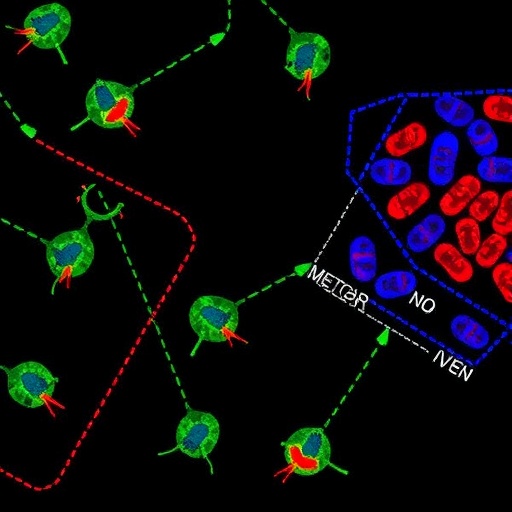Youth opioid use in Canada is escalating at an alarming rate, accompanied by a disturbing increase in emergency department visits and opioid-related fatalities. Despite this mounting crisis, governmental responses remain inadequate, perpetuating a dangerous cycle that threatens the health system’s capacity to curb this epidemic effectively. The Canadian Medical Association Journal recently published a compelling editorial that urgently calls for a radical shift in policy and healthcare practice aimed at addressing the opioid crisis among young Canadians with the seriousness it demands.
Across Canada, the misuse of prescription opioid pain relievers by youth has seen a sharp uptick, particularly in Ontario, where data reveal a stark increase from 12.7% in 2021 to an unprecedented 21.8% in 2023 among students engaging in nonmedical opioid use. Surprisingly, younger adolescents, specifically those in grades 7 through 9, exhibit higher rates of consumption compared to their older high school counterparts, indicating that the crisis is taking root at increasingly younger ages. This trend reflects a complex convergence of factors including accessibility, socio-economic pressures, and potentially inadequate drug education.
Emergency departments are bearing a significant burden as young people aged 15 to 24 now constitute roughly 9% of opioid-related visits. This demographic correlates with a sharp increase in mortality rates tied to opioid overdoses, which have surged by over 360% in less than a decade—from 2.6 per 100,000 population in 2013 to 12.2 per 100,000 by 2021 in Ontario alone. These statistics starkly illustrate the lethal trajectory of opioid misuse among youth and underscore the urgent need for preventative and treatment strategies tailored to this vulnerable group.
Despite the evident need, access to opioid agonist therapy (OAT)—a proven treatment modality for opioid use disorder—is paradoxically declining among youth. Prescription rates for OAT are diminishing even as the necessity for such interventions grows, highlighting systemic barriers within healthcare provision. Factors such as stigma, insufficient training among healthcare professionals, and regulatory hurdles contribute to the gap in treatment availability, disproportionately affecting younger populations in need of urgent care.
Beyond pharmacological interventions, psychological therapies and comprehensive substance use disorder programs remain sparse and frequently inaccessible. Long wait lists, limited availability in public healthcare settings, and the predominance of privately funded treatment options restrict access primarily to those with financial means. This inequity exacerbates health disparities and leaves the most at-risk youth without viable pathways to recovery, effectively sidelining a significant segment of the population.
The editorial emphasizes that inaction within Canada’s health systems constitutes complicity in a public health failure. Physicians and healthcare providers who serve young patients require robust institutional support, encompassing training, resources, and systemic reform, to effectively manage and treat opioid use disorder among adolescents and young adults. The current healthcare framework falls short, failing to integrate multidisciplinary approaches that combine medical treatment, mental health support, and social services.
From a clinical perspective, youth opioid use disorder presents unique challenges. Young patients often face developmental vulnerabilities, including underdeveloped executive functioning and heightened susceptibility to peer influence, which complicates treatment adherence and engagement. Moreover, co-occurring mental health disorders such as anxiety and depression are prevalent, necessitating integrated care models that address the full spectrum of clinical needs rather than isolated symptom treatment.
Contemporary evidence-based guidelines advocate for early intervention strategies that include screening in schools, primary care settings, and emergency departments, coupled with the provision of harm reduction resources. Public health initiatives should focus on education campaigns tailored to youth culture, de-stigmatization of addiction treatment, and expanded access to naloxone kits. However, funding and implementation of these strategies remain inconsistent across provinces, creating a patchwork of services that fail to adequately cover at-risk populations.
Preventative measures also demand attention to social determinants of health that intersect with opioid use, such as poverty, housing instability, and trauma. Effective responses must therefore adopt a holistic framework, collaborating across sectors including education, social services, and law enforcement, to create supportive environments conducive to resilience and recovery. The embedded complexities of opioid misuse in youth necessitate a multifaceted approach that transcends traditional medical treatment alone.
As the editorial poignantly states, recognizing the opioid crisis as a youth-centered epidemic is paramount. This recognition must translate into policy action—allocating resources, establishing youth-specific treatment programs, and fostering collaborations that leverage community assets and expert knowledge. The trajectory of opioid-related morbidity and mortality among youth will otherwise continue its upward trend, imposing long-lasting burdens on individuals, families, and public health infrastructures alike.
In conclusion, Canada stands at a critical juncture in its fight against the opioid epidemic. Without immediate and comprehensive action focused on youth, the health system risks perpetuating a cycle of addiction and preventable death for generations. Intervening with evidence-based opioid agonist therapies, expanding psychological support services, dismantling access barriers, and implementing targeted prevention programs are essential steps toward reversing this devastating trend. The cost of inaction is measured not only in statistics but in the lost potential and futures of Canadian youth.
Subject of Research: People
Article Title: Canada’s youth are part of the opioid crisis and need treatment
News Publication Date: 27-Oct-2025
Web References: https://www.cmaj.ca/lookup/doi/10.1503/cmaj.251682
Keywords: Opioid addiction, Young people, Adolescents, Children, Substance related disorders, Emergency medicine, Pediatrics
Tags: emergency department visits for opioid overdosehealthcare response to opioid epidemicnonmedical opioid use trendsOntario youth opioid statisticsopioid-related fatalities among young Canadianspolicy changes for youth drug educationprescription pain reliever misuse in youthradical shifts in opioid policyrising opioid use among adolescentssocio-economic factors in opioid useyouth addiction and health system impactyouth opioid crisis in Canada





